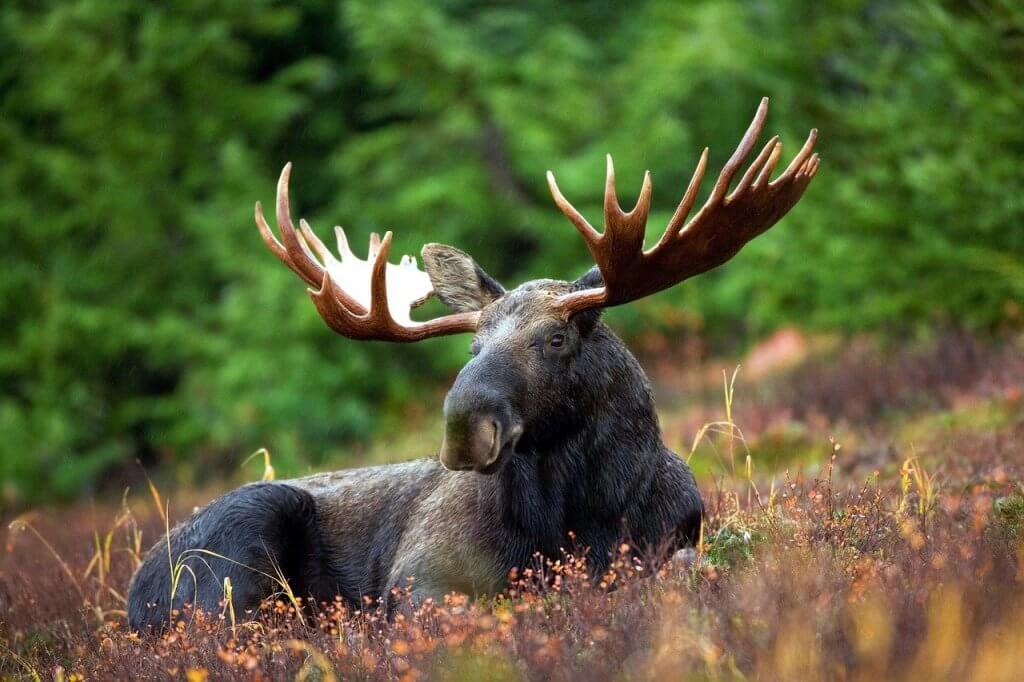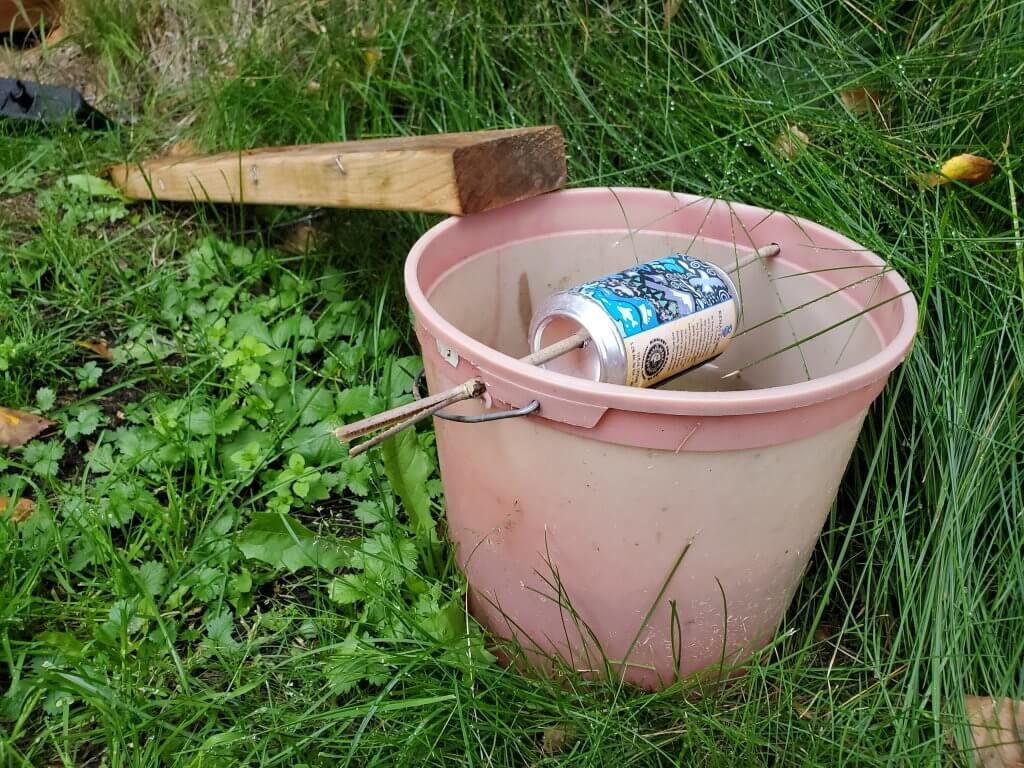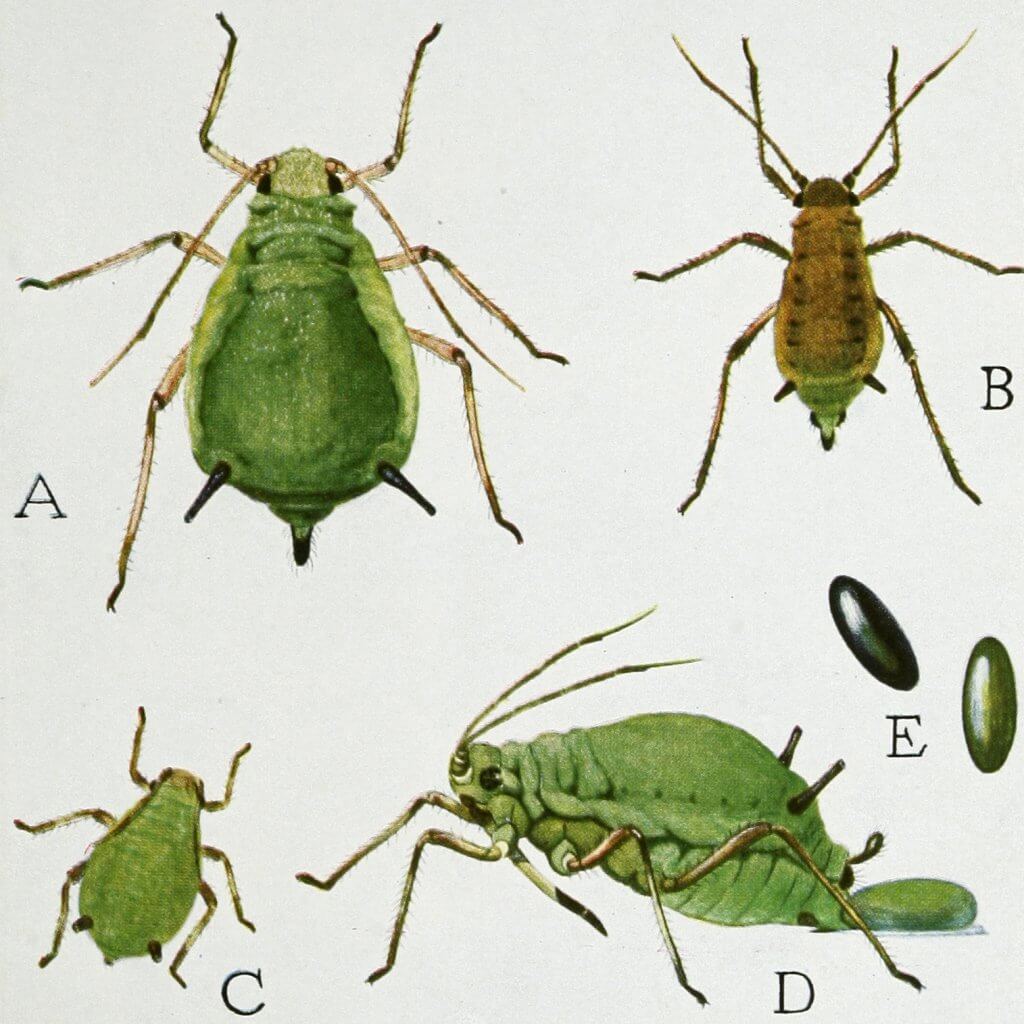In 2020, we decided to re-architect the vision of FrostyGarden.com.
We have started the process of migrating our site to static content, this page is subject to that process! Something you will learn about us – we test our code in production. We aren’t some ad agency with a team of writers, a budget and a timeline!
We will remove this notice when we feel the content is completed, but our goal is to continually update our information in the future!
Thanks for bearing with us!
One of the absolutely great things about gardening in the subarctic is that most garden pests are really not a major problem.
You can grow giant, near perfect leafy greens and you won’t have various bugs eating your leaves. Compared to other places we’ve gardened, this is a huge relief.
This isn’t to say that the subarctic is free of pests, though. Very much contrary to this, there are garden enemies we have to look out for!
The Biggest Subarctic Garden Threat Are Moose!
When we talk about the biggest threat, it’s actually really big!
Where people at more southern latitudes are battling deer, our biggest threat here in the Interior of Alaska is usually from moose.

Moose love to munch on fresh greens and your garden is a delicious alternative to their normal diet.
To keep the moose out of your garden will be a challenge. Moose are very large animals that, put simply, can go where they want. That said, there are a few techniques you can use to deter them.
- Electric fencing
- Tall fencing (8 to 12 feet high)
- Bright neon flaggers tape
Electric fencing is largely recognized as the most effective moose deterrant. This obviously requires some investment. You also want a pretty powerful system to really deter the moose as well. Most people recommend three strings of electric fence at two feet, five feet and somewhere above even that.
When it comes to normal fencing, Moose can jump really high. Eight foot tall fencing is not quite enough. Some moose have even been known to leap over 12 foot tall fences. A 12 foot tall fence is the minimum standard you’d want to use in the subarctic, at least if you’re trying to keep the moose out.
We came across an old “wive’s tale” that using bright colored neon flaggers tape around your garden is an effective technique. Conceptually, the flaggers tape must be secured in such a way where it can be blown by the wind, moving about and signalling to a moose that there is a threat.
We thought this was “pants on head crazy,” but nonetheless, we still tried it! It was cheap and DIY enough that we were all about it.
It’s hard to measure the effectiveness of such things, there could be a variety of reasons the moose didn’t go after your garden in a particular year.
But, our flagging tape results indicate it could be an effective technique. While we did still have our garden munched on a little bit, the damage was quite light. Most times when a moose gets on your garden, you’re going to lose almost everything. In our case, they munched on some beans and left sometime thereafter!
Voles Might Be Cute, But They Can Devastate Your Garden!
One of the greatest issues we face in the subarctic is from voles.
Voles are a small rodent that typically tunnel or scurry along the ground. They are a relative of the mouse and are quite common in our area.
In the subarctic, they don’t face much in the way of natural predators so populations can get quite large. They can devastate your plants in a hurry, too.

There are several ways you can deal with voles. Some of the methods you can use to prevent voles from destroying your hard work include:
- Active traps
- Passive traps
- Preventative measures
We know there are some people out there that have a problem with killing wild animals. We understand both sides of the argument and it comes down to personal choice.
The thing with voles is that they are prolific. If you don’t do enough to control their populations, they can do some serious damage to more than just your garden.
We typically use regular mouse traps for our primary vole prevention. We find that they are the most effective
We have also built and used passive trap systems. While these are somewhat effective, we have found them less so than active vole traps.

This is an inexpensive and common passive DIY vole trap that we built. Bait is often placed on the soda can. When the vole leaps to the bounty, they fall into the bottom of the bucket.
We also utilize preventative measures that we explore further in this post.
Onion Fly & Onion Maggots Are Devastating
There are a few flies that can be problematic. This particular one can affect cabbage and allium in the subarctic.
We like to grow a lot of allium here at Frosty Garden and have some personal experience with the threat of onion flies. They are a very formidable and serious threat to allium growers in the subarctic!
Onion flies are a particularly nasty bugger.
They like to lay their eggs around your onion, leek, garlic and other allium plants. These eggs then hatch into little maggots who then proceed to feast on your treasured onion plants. These maggots then form into a cocoon and burrow themselves in your soil, where they will survive and come back to haunt you the following year.
Once you have them, onion flies are notoriously difficult to rid yourself of. The two most recommended options are to relocate your garden at least a mile away or to “simply” replace all of your soil.
Not really great options at all, actually.
When it comes to onion flies & maggots, the best thing is prevention. It is recommended to cover your allium plants with remay cloth. Any technique that effectively prevents access to your allium is a good idea.
There are some additional passive prevention techniques, such as using yellow fly traps and spreading diatomaceous earth around your allium.
We are planning on developing a more comprehensive tutorial on dealing with onion maggots. First, though, we must actually solve our problem.
Aphids Are Everywhere, The Universal Garden Pests
Aphids are an incredibly common garden pest. There is nowhere they don’t live.

Magnified pictures of aphids are almost terrifying. So, you’ll just have to deal with this illustration of some aphids to get an idea of what they look like, instead.
There are many varieties of aphids in the world and some can survive subarctic winters. They are a small bug that if left unchecked, can quickly devastate your garden.
Favorite plants of the aphid are peppers, basil, and some types of flowers. That said, aphids will feast on just about anything in your garden.
At least in the subarctic, the aphid populations vary from year to year. Some years are particularly bad. Other years they are barely a nuisance or maybe even aren’t noticed.
In any case, if you see aphids on your plants, it’s good to treat them immediately. While there are several potential techniques, our favorite method is using neem oil.
We create a solution of neem oil and put into a spray bottle. We then spray our plants all over and especially where we see aphids. The neem oil will effectively and quickly cause the aphid to die.
As with most pests, it’s best to treat as soon as you see them, well before they become a problem. This is especially true when you find aphids in greenhouses or hoophouses. Aphids can thrive when they are protected from the environment.
All Things Considered, We Got It Pretty Good
In more southern latitudes, the number of pests are significant. We were quite happy as gardeners to grow in a more difficult place for these pests to survive.
Up in the subarctic, there are no cabbage moths, hornworms or leaf miners. In all actuality, we’ve got it pretty good in the subarctic.
We certainly haven’t come across every possible pest yet, but these are the ones that have impacted our gardens.
Did we miss something? Be sure to tell us below.
That’s All We Wrote!

Having a good time? We have an ever growing list of insightful and helpful subarctic & cold climate gardening articles, waiting out there for you!
- Cold Climate Gardening Basics 👉
- Growing Your Garden From Seed Indoors 👉
- Advanced Cold Climate Gardening Techniques 👉
- Plant Specific Cold Climate Growing Guides 👉
- Subarctic Perennial Food Forests & Foraging 👉
- Indoor Garden Lighting & Grow Rooms 👉
- Greenhouses & Temperature Control 👉
- Harvesting & Food Preservation 👉
- Solving Cold Climate Garden Problems 👉
- 1 Minute Reads On Tons Of Garden Topics 👉
FrostyGarden.com is 100% ad-free and we do not use affiliate links! This resource is voluntarily supported by our readers. (Like YOU!) If we provided you value, would you consider supporting us?
